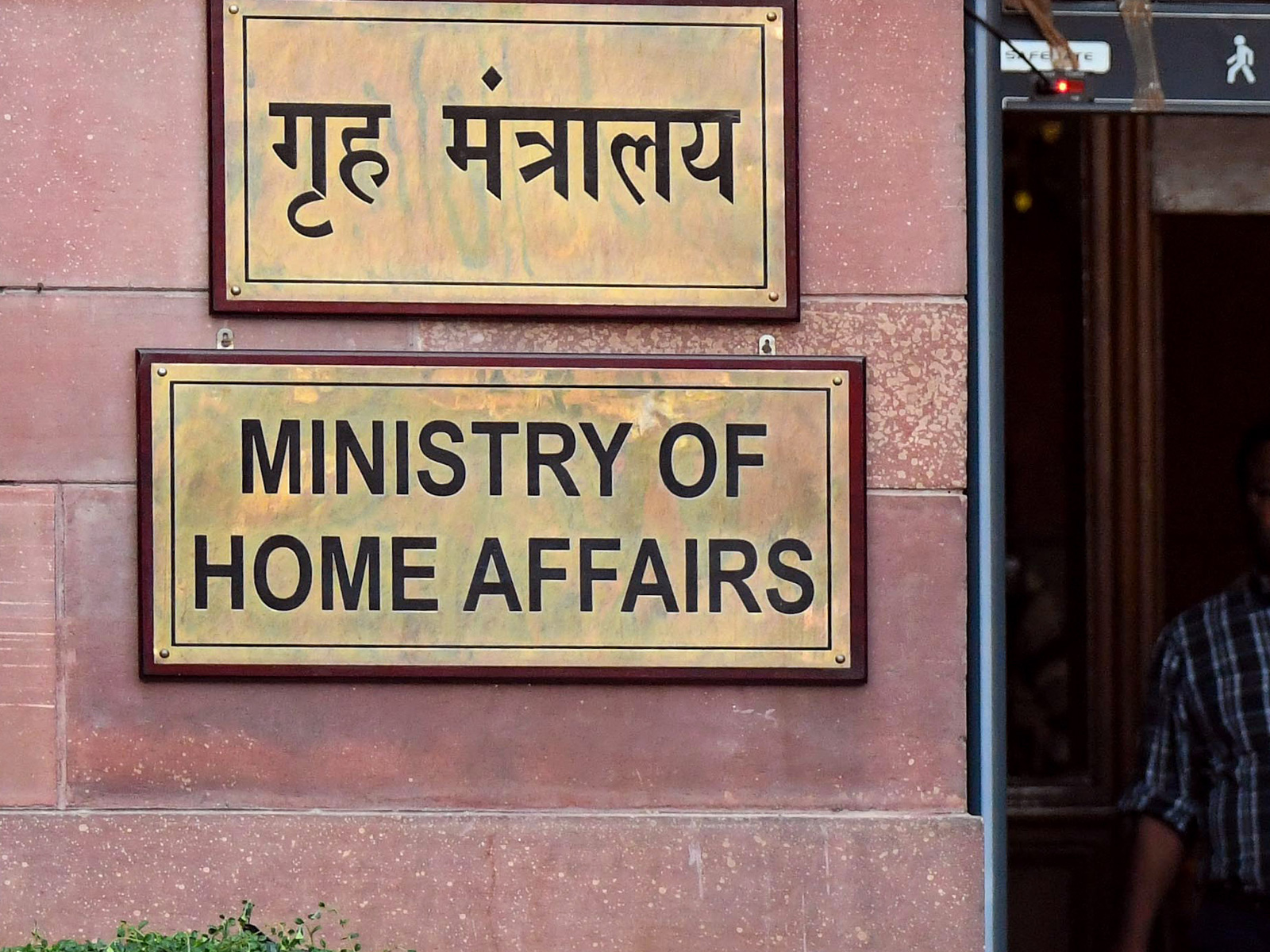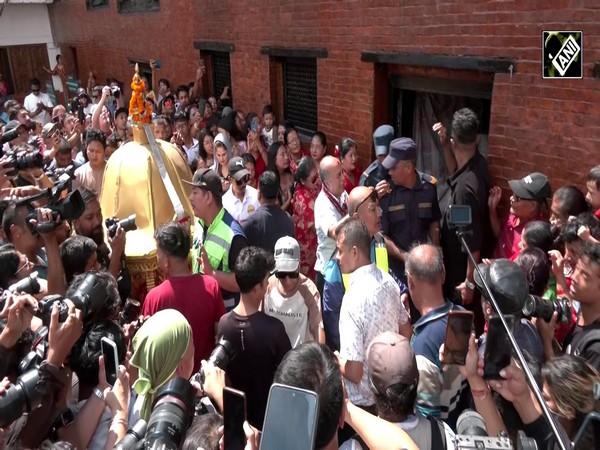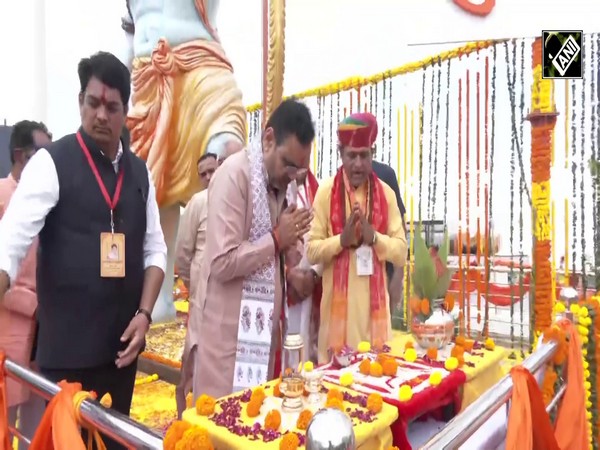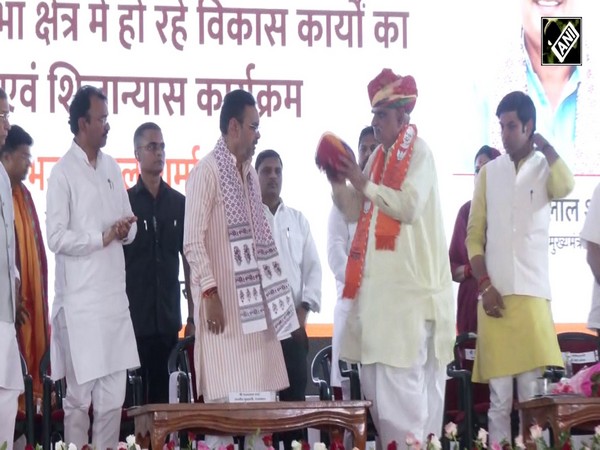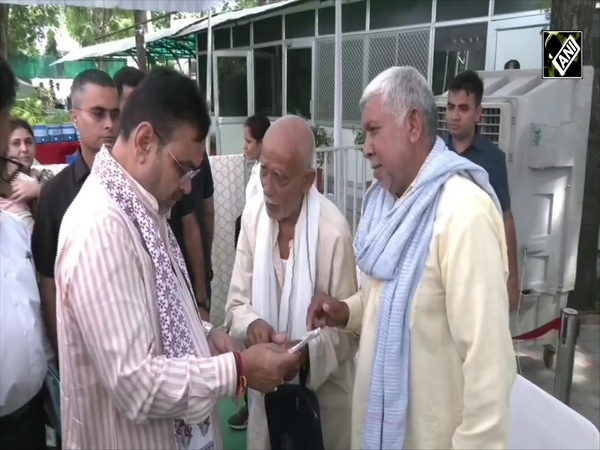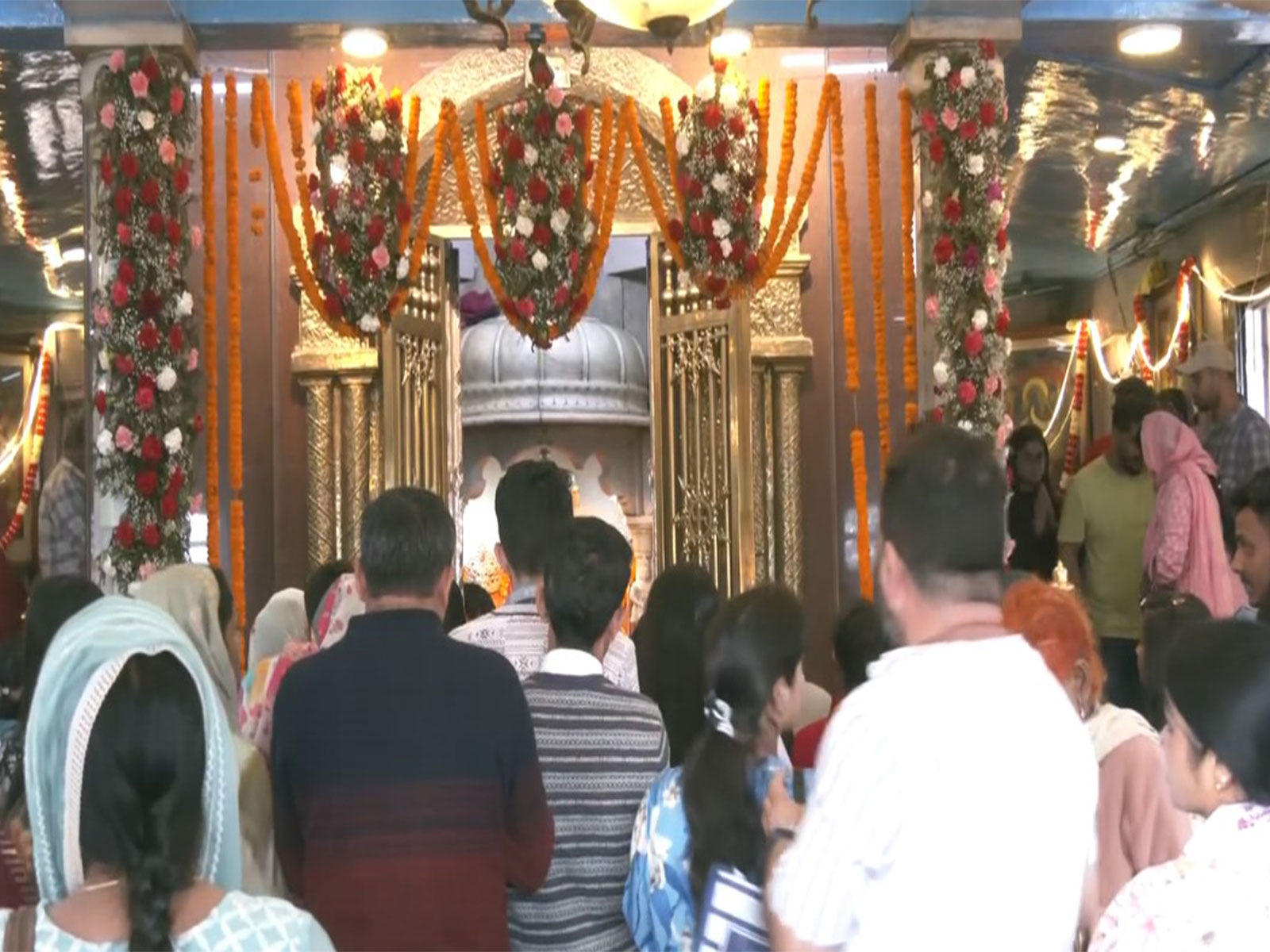
Tourists, locals, Bengali community celebrate Durga Ashtami at Kalibari Temple in Shimla
Sep 30, 2025
Shimla (Himachal Pradesh) [India], September 30 : While thousands of devotees thronged various Shaktipeeths across Himachal Pradesh on the occasion of Durga Ashtami, the state capital, Shimla, witnessed unique celebrations at the historic 200-year-old Kalibari Temple, where the local Bengali community performed rituals in a traditional style.
The temple, a cultural landmark of Shimla, drew large number of devotees, tourists, and residents of Bengali origin who organised Sandhi Puja, a ritual observed at the confluence of Ashtami and Navami.
Former Himachal Pradesh Chief Minister Jai Ram Thakur's wife, Sadhna Thakur, also visited the temple and joined the rituals.
"At Shimla's Kalibari temple, Durga Puja is being observed according to Bengali traditions. On Ashtami and Navami, Sandhi Puja is held here. Attending this has been a very enriching experience. I feel blessed that Goddess Kali's grace remains upon us all, and I extend greetings of Navratri, Maha Ashtami, and Maha Navami to everyone. May Maa's blessings bring happiness and prosperity to every family in Himachal," she told ANI.
The ritual significance was further explained by Subhra Banerjee, an IAS officer and long-time Bengali resident of Shimla, who highlighted the spiritual depth of the practice.
"This temple is not just a shrine but also a tradition. We believe that on Ashtami, the Goddess comes to her maternal home. As part of this, we also conduct Kumari Puja, where Maa is worshipped in the form of a young girl, symbolising her arrival as a daughter. It is a sacred moment," she said.
"The ritual is observed like a festival of light, similar to Diwali. Just as Ram Navami involves worship with 108 lotuses, here too, 108 flowers are offered during Sandhi Puja. The special time of 27 minutes of Ashtami and 27 minutes of Navami is marked with devotion, fasting, and prayers. Women lead the Kumari Puja and the rituals, while men perform the Yajna on Navami, which concludes the festival. This symbolises the departure of the Goddess on Dashami, sending her to the heavenly abode. The entire festival is a prayer for health, longevity, happiness, and peace for all," Banarjee added.
Adding details of the ritual's historic roots, Ranojit Roy, a member of the Kalibari Temple Trust, told ANI, the Sandhi Puja, or Sandhi Kshan, is performed in the 48 minutes between the end of Ashtami and the beginning of Navami.
"It carries immense importance. During this, 108 lotuses are offered and 108 lamps are lit. Devotees also offer lamps to seek blessings for their wishes to be fulfilled in the future."
"This is a celebration of happiness, unity, and brotherhood. In ancient times, this form of worship was known as Akal Bodhan, first performed by Lord Ram before his victory over Ravana. After the Sandhi Puja, he attained success. Likewise, it is believed that Goddess Durga, armed with the combined powers of Brahma, Vishnu, and Mahesh, vanquished the mighty demon Mahishasura in this very phase. That is why Sandhi Puja is central to Durga Ashtami celebrations," said Ranojit.
The Kalibari Temple complex has also been decorated with pandals and lighting, attracting not only Bengali residents but also large numbers of tourists and locals, turning it into a centre of cultural confluence. The rituals will culminate with a Yajna on Navami and the symbolic farewell to the Goddess on Dashami.





